
The mystic isle of Noirmoutier...
June 9, 1998
West Virginia University
in Vendée, France

The mystic isle of Noirmoutier...
June 9, 1998
On the bus to the Island of Noirmoutier, one of the more
spectacular and beautiful places in Europe.
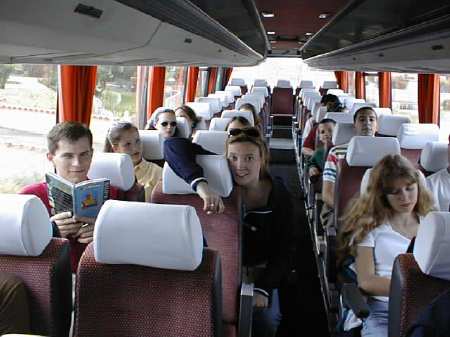
Two means of access are now available to the island. This morning we will
take the bridge. The famous "gois", and national highway, is now under
several feet of sea. This island is blessed with a mild climate and some of the
richest soil in the world. Its strategic position off the coast of France has made
it the object of numerous occupying armies, including those of the Romans, the Francs, the
Norman Vikings, the English, the Spanish, the Dutch, the French Revolutionary army, the
Vendée counter-revolutionaries, all the way up to Hitler's troops stationed here to fend
off the allied invasion that would in fact take place to the north on the beaches of
Normandy in 1944. Below, the Vendéens look over the estuary as we cross the bridge
on to the island.
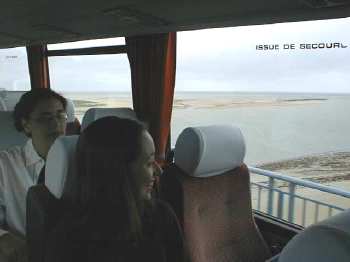
Noirmoutier's principal church is the Eglise Saint Philbert. Saint
Philbert worked to Christianize much of Western France in the 7th century. After his
death in the year 685, his remains were buried here. As invasions of the Norman
Vikings in the 8th and 9th centuries became imminent, the faithful of the monastery
decided to move the remains of their beloved founder further inland. As the
barbarian Normans advanced they retreated step by step all the way to Tournus in Burgundy,
where most of Saint Philbert's remains are kept today.
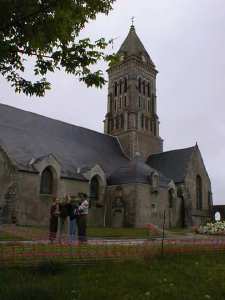
The crypt of the church does however possess some relics (parts of Philbert's
body) in the darkest and most recessed part of its foundation. Here, the Vendéens
visit this dimly lit crypt.
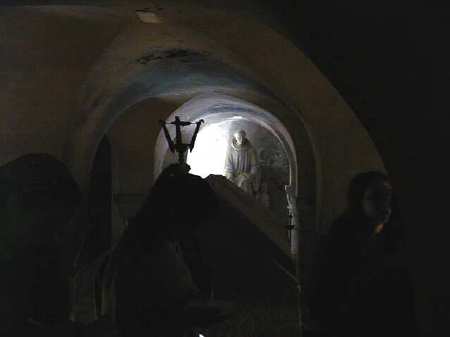
The castle and central donjon of the castle of Noirmoutier are a testament to
the state of siege that marked much of the island's history.
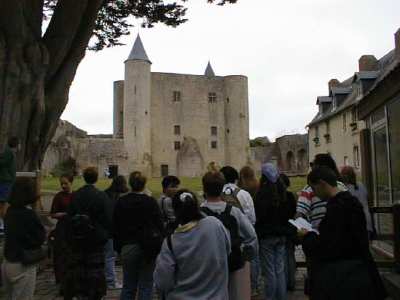
The port of Noirmoutier is still quite prosperous, due in part to the variety
of fish its fleet its fleet is equiped to capture. The shadow of the new European
Union, and its new regulations, nevertheless hang over the fishermen.
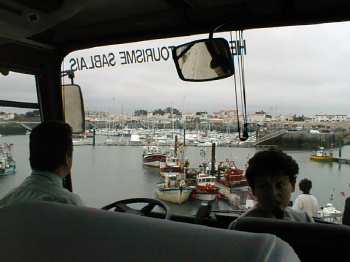
The rich soil of the island originally became known for the quality of its
wheat and the flower produced in the numerous and one very active windmills. Today,
the island is famous for its delicious "new potatoes", fertilized with the
seaweed that rolls up on the sands all around. Salt, once the only means of
preserving food for long periods, was also a vital product of the isle. Below
are the intricate and delicate "salines" that, thanks to the winds and bright
sunlight of this part of France, produce a rich and highly sought after form of natural
sea salt. These salines work essentially by creating a gentle flow of sea water that
rests temporarily in the labyrinths of rectangular "tubs". The water
evaporates all along the way through to the central square receptacles in the
middle. There the "saunier", the saltman, gathers the nearly solid salt
composit on to the round areas of the cells and lets the sun finish the drying process.
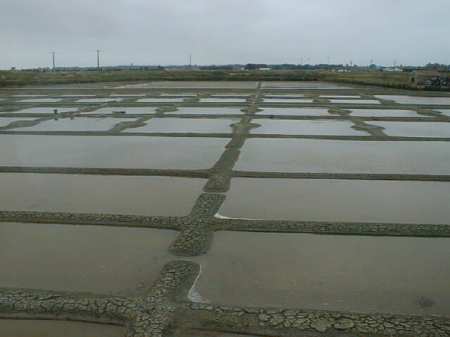
Just before lunch the Vendéens are driven to the "Gois", a ford from the Continent over to the island that is practicable only at low tide. Many an unwary crosser has lost life or vehicle trying to cross this road as the tide rushes in. The most recent accident occurred just a few days ago, when a savy islander tried to get across at just the wrong time. He lost his SUV to the tides, but after climbing up one of the several poles along the road, he was saved by boat. He was among the lucky ones.
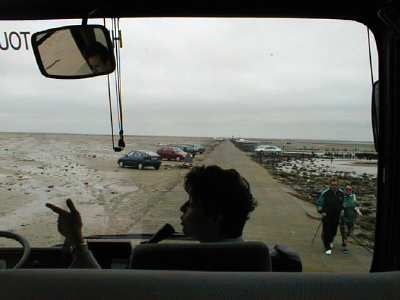
No visit to Noirmoutier would be complete without sampling the
delicious products of its earth and sea. On today's menu are:
Une croustade de fruits de mer --- Du dos de cabillaud
au beurre blanc --- Pommes de terre de Noirmoutier ---
Charlotte aux fruits des bois
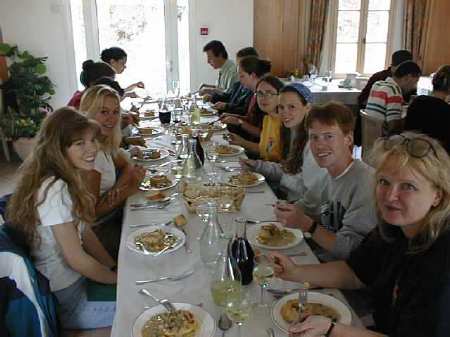
After lunch we visit the Musée des Arts et Traditions Populaires. Here
we see some of the basic articles that have permitted life and prosperity to the islanders
through the ages. Photos are not allowed in the museum, but we will all remember the
famous hat called the "Quichenotte". These hats were worn by the women of
the region, and are said to have acquired their name during the Hundred Years War.
As the English settled in the region, they reputedly became quite forward with the women,
who found protection under their wide and incomassing hats, as they shouted to the English
soldiers: "Kiss not, kiss not." Hence the name "quichenotte."
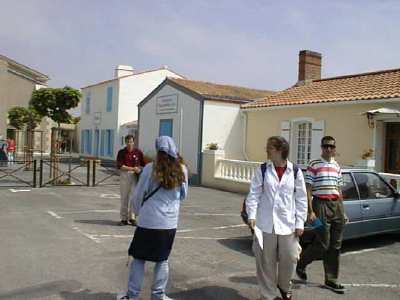
After the museum, we return to the gois to witness what the high tide had made
of the road. To the Vendéens' surprise, the paved road we had travelled on a few
hours before was no longer to be seen! This sight is one of the most impressive the
island has to offer.
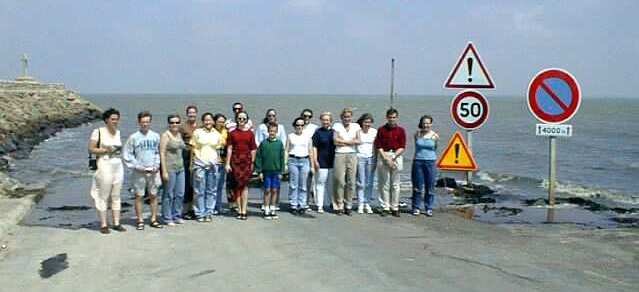
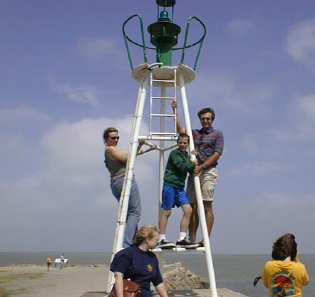
On the way back to Les Sables, we stopped on the "Côte Sauvage", a
rocky and unhospitable part of the coast. Here, five boulders stand high and proud
at sea, as voyagers watch the waves crash on their granite shoulders.
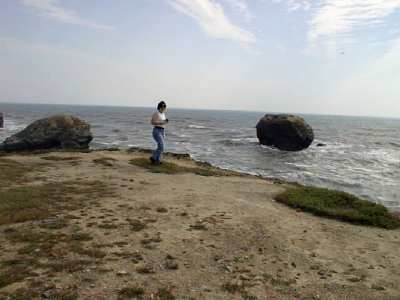
Stay tuned to WVU-V!
Go on to June 10, 1998.